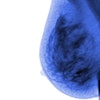VIENNA - The diagnostic armamentarium of the mammographer has grown exponentially in recent years with the development of a dizzying array of new breast imaging technologies. From MR mammography to full-field digital x-ray systems, breast imagers now have more tools than ever to catch pathology earlier and with less patient morbidity and mortality.
Such emerging technologies were the focus of a scientific session on Wednesday at the European Congress of Radiology. The presentations indicate that European researchers are quickly advancing the state of the art in breast imaging.
European clinicians were among the first to gain access to full-field digital mammography when GE Medical Systems of Waukesha, WI, received European approval for its Senographe 2000D system in March 1999. The action came nearly a year before the product's approval in the U.S.
One of the first European installations of the system was Charite Hospital in Berlin, and researchers from the hospital were on hand to discuss the system's performance in the localization of non-palpable breast lesions.
The hospital has been performing all of its needle localizations with the Senographe 2000D since June 1999, conducting 50 studies so far, according to Dr. Susanne Grebe, who presented the research at the ECR. Charite researchers have evaluated those studies to determine whether full-field digital mammography enables mammographers to image patients more quickly and with less radiation dose.
For each study, researchers acquired initial pre-localization and final post-localization cranial-caudal and mediolateral views with the system operating at full radiation dose levels. All other images were acquired at only half-dose.
Senographe 2000D had image quality at least as good as a conventional film-screen mammography, Grebe said. In addition, the half-dose images were capable of displaying microcalcifications with only a slight loss of image quality, she said. Image exams were also speeded up due to the digital technology, with images available for review only 20 seconds after exposure.
The Charite study concluded that full-field digital mammography is ideally suited for needle localization procedures, and can cut the procedure time from the 37 minutes experienced with film-screen mammography to 25 minutes with the digital technique.
Another group of German researchers has also been pursuing digitally guided needle biopsy techniques, in their case with a Mammomat 3000 mammography system and an Opdima digital spot film unit manufactured by Siemens Medical Engineering Group of Erlangen. This group has outfitted the system with a Mammotome vacuum-assisted biopsy device manufactured by Ethicon Endo-Surgery of Cincinnati.
The group's goal was to see if the Mammomat 3000 with the Mammotome attached could be a less expensive alternative to a dedicated breast biopsy table. The group performed vacuum core biopsy in 37 patients with mammographically detected lesions, according to Dr. Ulrike Aichinger from the Institute for Diagnostic Radiology at the University of Erlangen, who presented the study.
The group detected and biopsied all 37 solid lesions and microcalcifications. The patients reacted well to the procedure - patient comfort being an important consideration as most needle biopsy procedures are performed with patients in the prone position. Aichinger concluded that the retrofitted system was a suitable - and cheaper - alternative to a dedicated breast biopsy.
In the discussion after Aichinger's presentation, several members of the audience debated the merits of biopsying patients in the sitting vs. the prone position. Most agreed that sitting is a much quicker procedure, but requires more patient management and interaction.
The cutting edge of breast biopsy was explored in a presentation by Dr. Werner Kaiser of the Institute for Diagnostic and Interventional Radiology in Jena, Germany. Kaiser's group has developed a robotic breast biopsy system, called Robitom, for automatically sampling tissue while a patient is inside the bore of an MRI scanner.
MR breast imaging been making great strides, and is capable of generating information that is not seen with x-ray mammography. But MR-guided breast biopsy is cumbersome due to the closed nature of high-field magnet bores. Patients must be imaged in the scanner, then pulled out for biopsy if suspicious lesions are discovered.
Robitom consists of a table with dual cut-outs for the patient's breasts. A biopsy device made from MR-compatible materials is mounted on a rack attached to the underside of the table. The patient is inserted into the magnet, and the biopsy device is moved forward to insert the needle into the breast.
So far, Kaiser's group has only used Robitom in animal studies. But the system has been able to hit its target each time, according to Kaiser. The next step is to pursue human studies with the device, he said.
By Brian Casey
AuntMinnie.com staff writer
March 8, 2000
Let AuntMinnie.com know what you think about this story.
Copyright © 2000 AuntMinnie.com


















